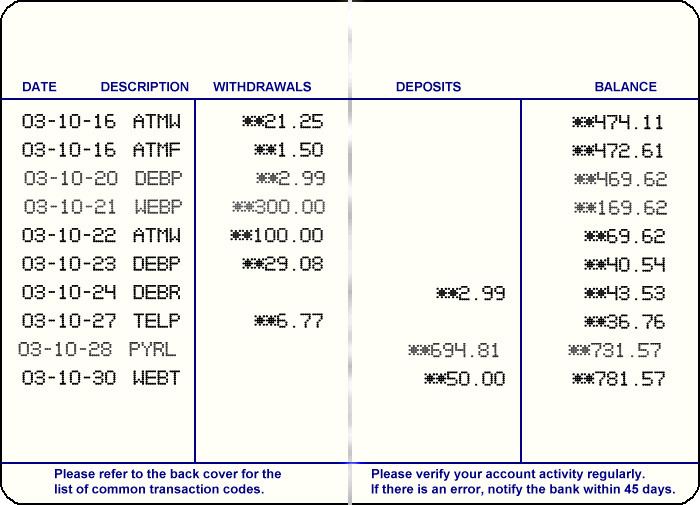 | ||
A passbook or bankbook is a paper book used to record bank transactions on a deposit account.
Contents
Traditionally, a passbook is used for accounts with a low transaction volume, such as a savings account. A bank teller or postmaster would write, by hand, the date and amount of the transaction, the updated balance, and enter his or her initials. In the late 20th century, small dot matrix or inkjet printers were introduced capable of updating the passbook at the account holder's convenience, either at an automated teller machine or a passbook printer, either in a self-serve mode, by post, or in a branch.
History
Passbooks appeared in the 18th century, allowing customers to hold transaction information in their own hands for the first time. Up until then transactions were recorded in ledgers at the bank only, so that customers had no history of their own deposits and withdrawals.
The passbook, which was around the size of a passport, ensured that customers had control over their own information, and was called a "passbook" because it regularly passed between the bank and the account holder for updating. It was also used as a way to identify the account holder without needing further identification.
Passbooks are very popular in Russia. They are issued by Sberbank.
Credits and deposits
To add credit to an account by bringing cash to a bank in person, the account holder can fill a small credit slip or deposit slip. The total amount of each note and coin is counted and entered on the slip, along with who it is paid in by and the date. The cash and details are counted and checked by the teller at the bank, if everything is in order the deposit is credited to the account, the credit slip is then kept by the bank and the credit slip booklet is stamped with the date and then returned to the account holder.An account holder uses their passbook to record their history of transactions with their bank.
Debits and withdrawals
Withdrawals normally required the account holder to visit the branch where the account was held, where a credit slip or withdrawal slip would be prepared and signed. If the account holder was not known to the teller, the signature on the slip and the authorities would be checked against the signature card at the branch, before money was paid out. In the 1980s, banks adopted the black light signature system for passbooks, which enabled withdrawals to be made from passbooks at a branch other than the one where an account was opened, unless prior arrangements were made to transfer the signature card to the other branch. Under this system, the passbook's owner would sign in the back of the passbook in an invisible ink and the signing authorities would also be noted. At the paying branch, the signature on the withdrawal slip would be checked against the signature in the book, which required a special ultraviolet reader to read. Nowadays, customer verification is more likely to be by PIN and commonly from an automated teller machine.
Direct banking
For people who feel uneasy with telephone or online banking, the use of a passbook is an alternative to obtain, in real-time, the account activity without waiting for a bank statement. However, contrary to some bank statements, some passbooks offer fewer details, replacing easy-to-understand descriptions with short codes.
